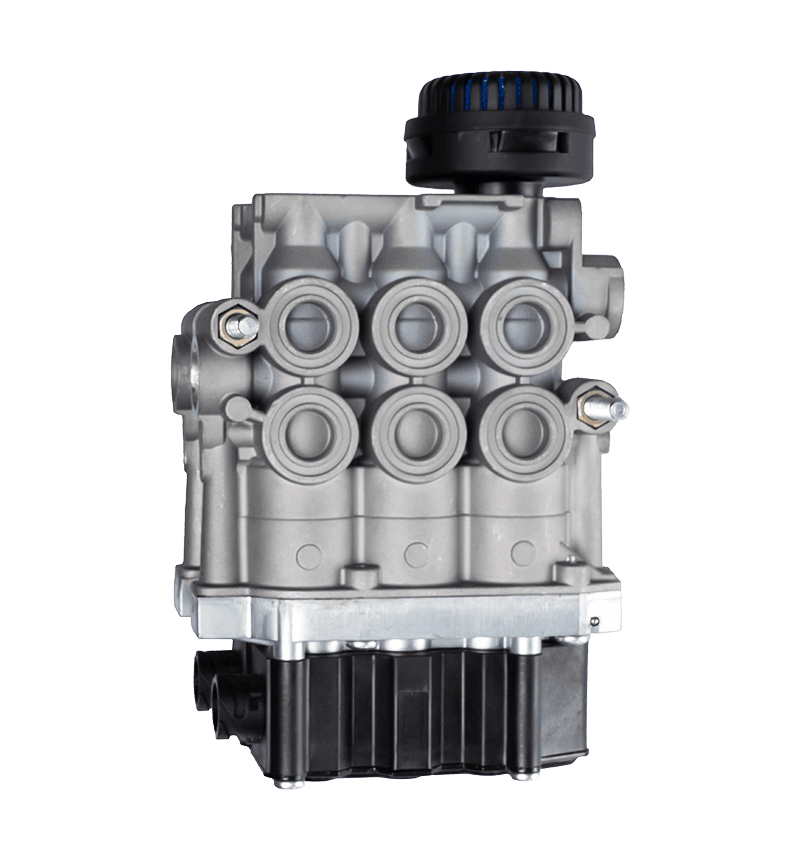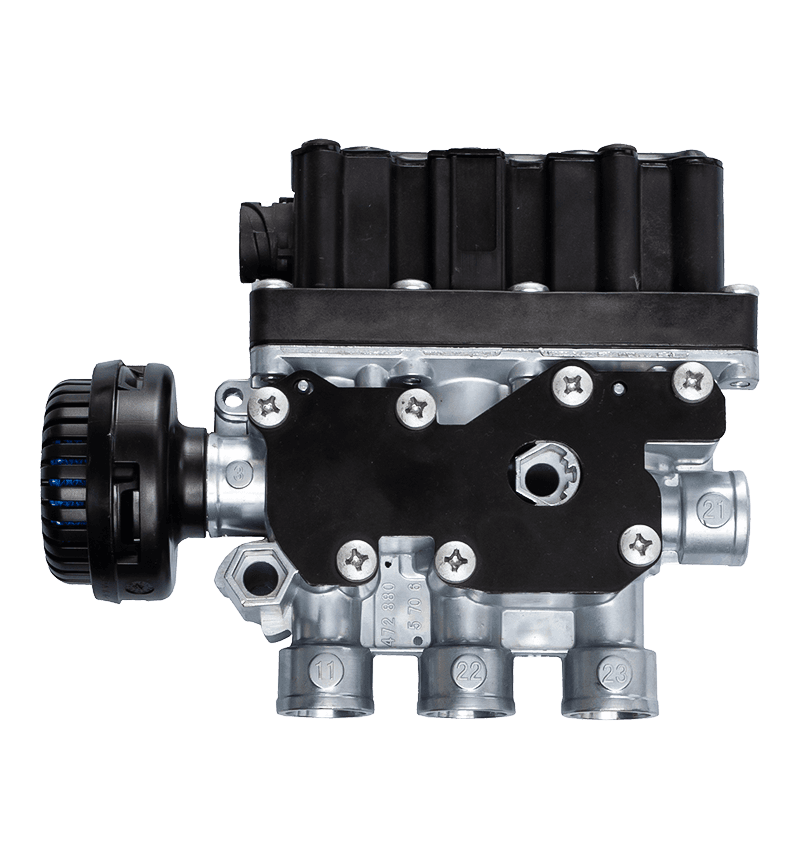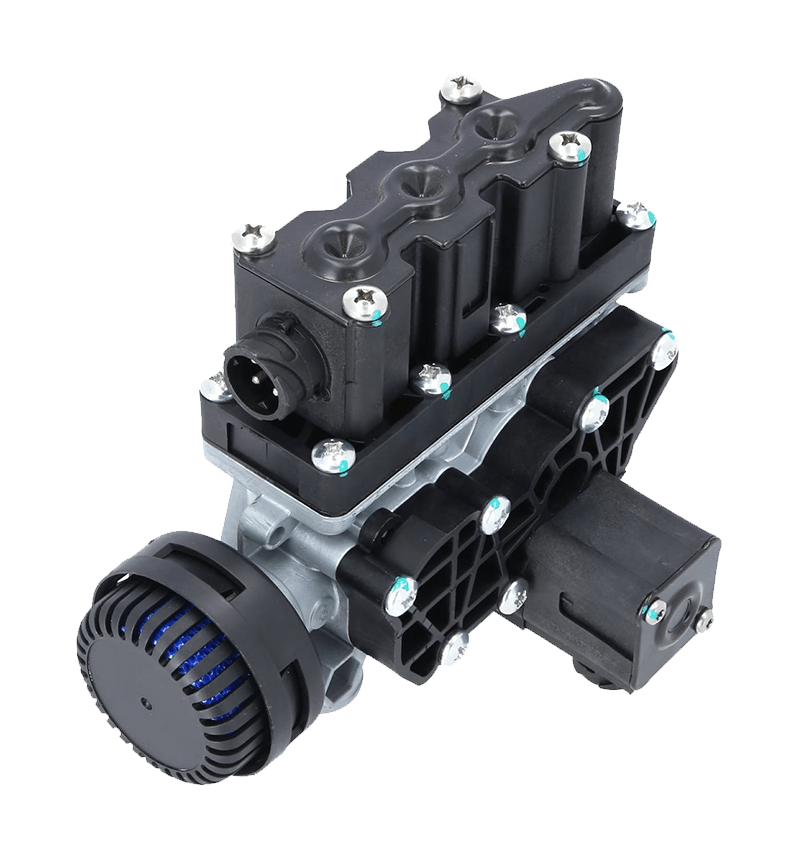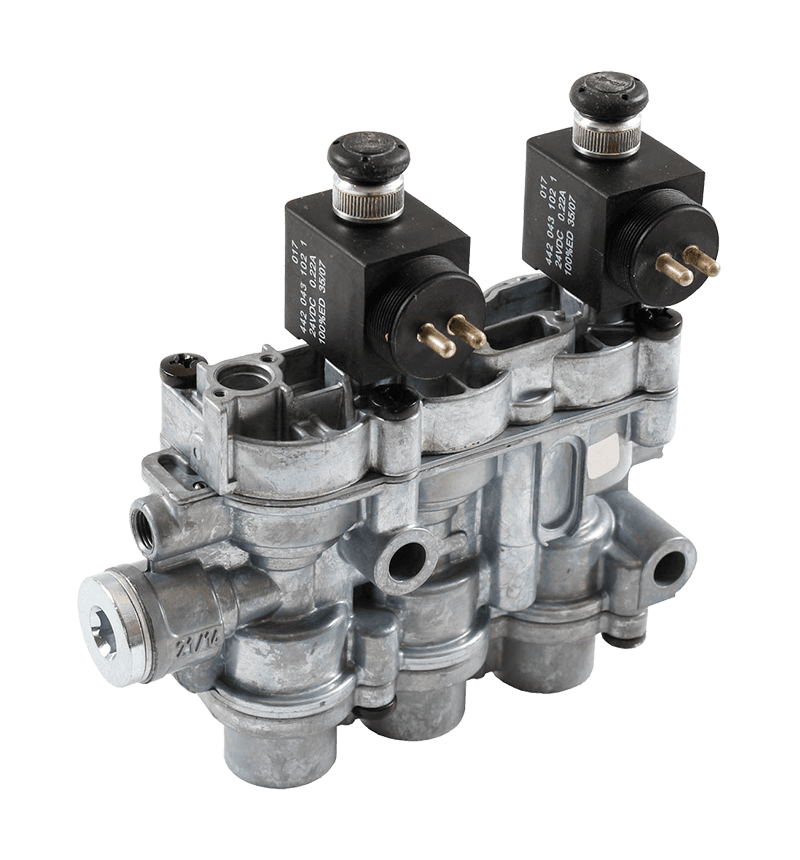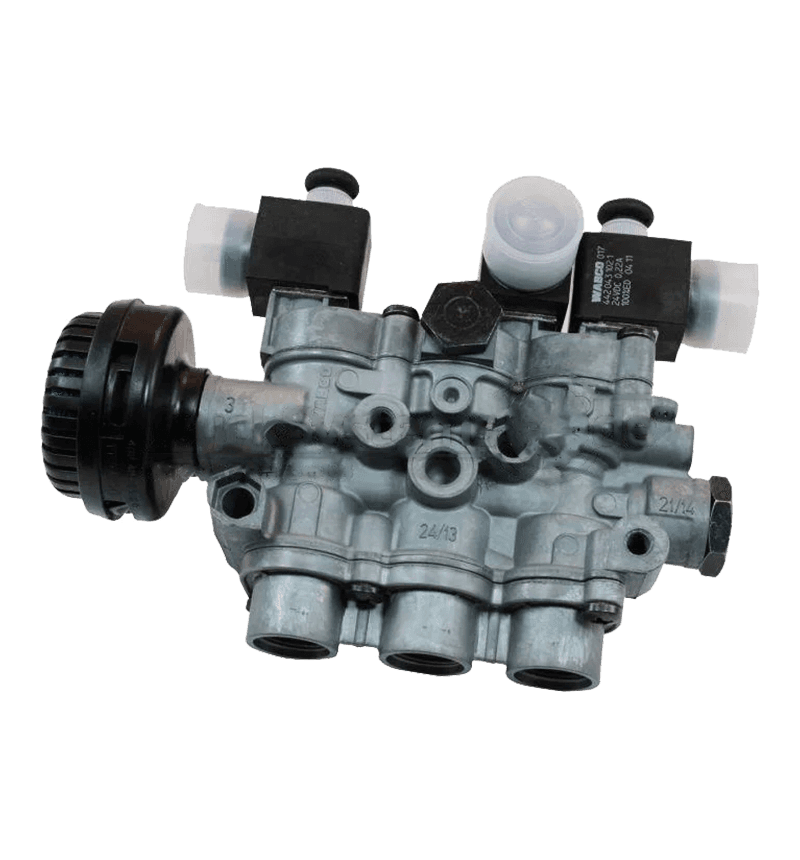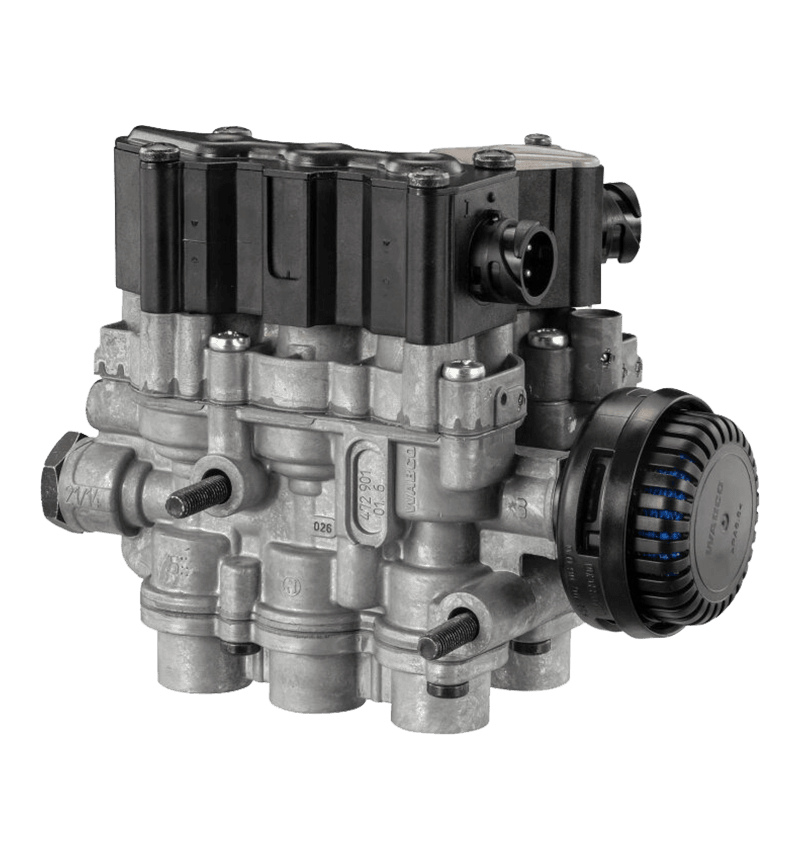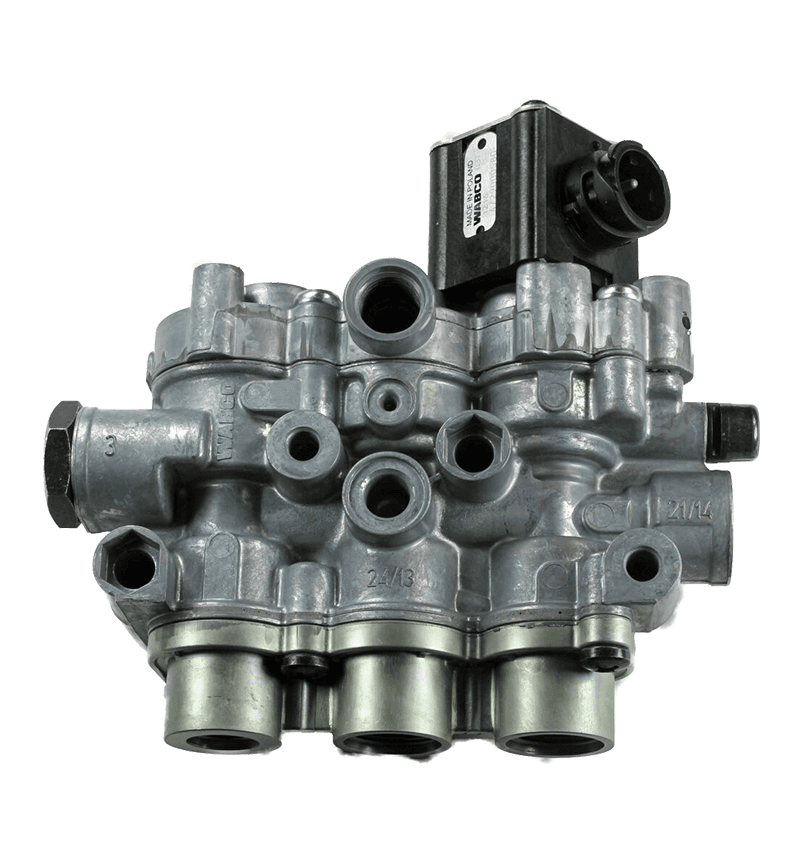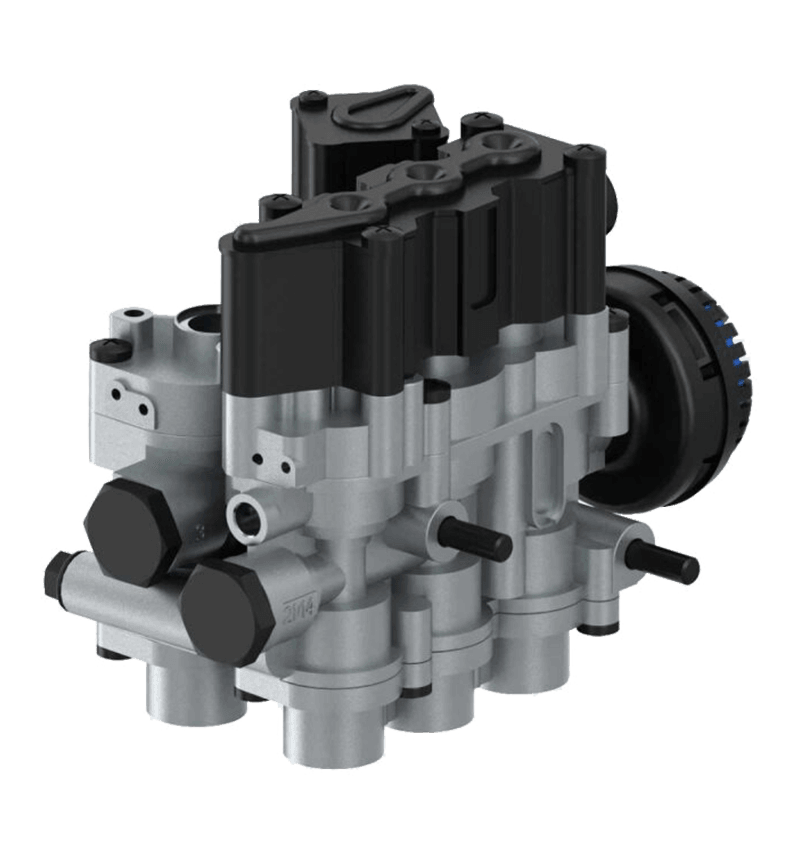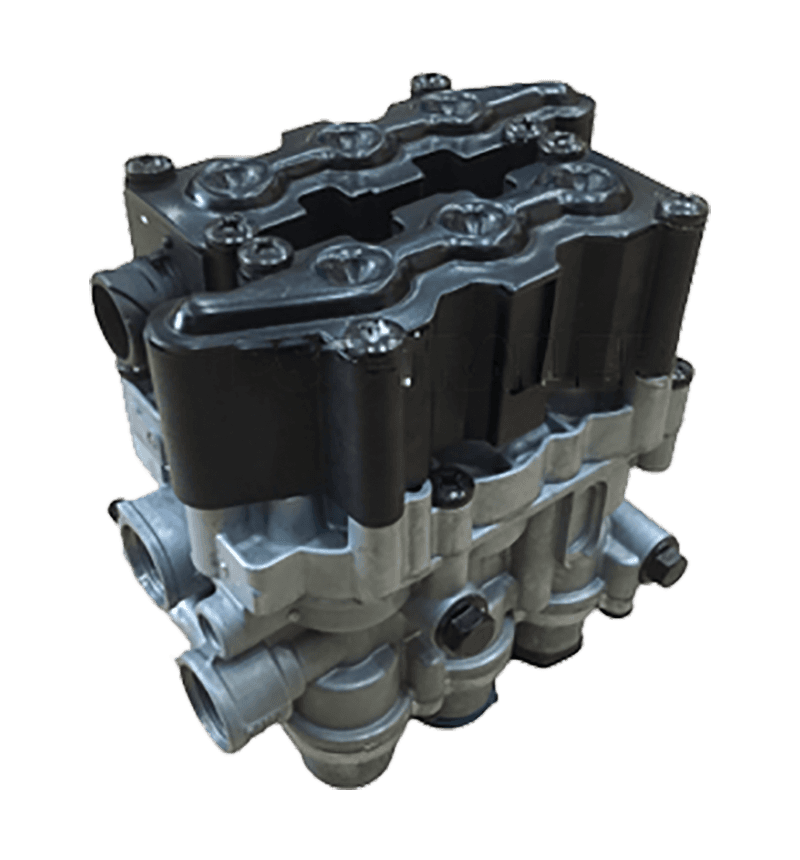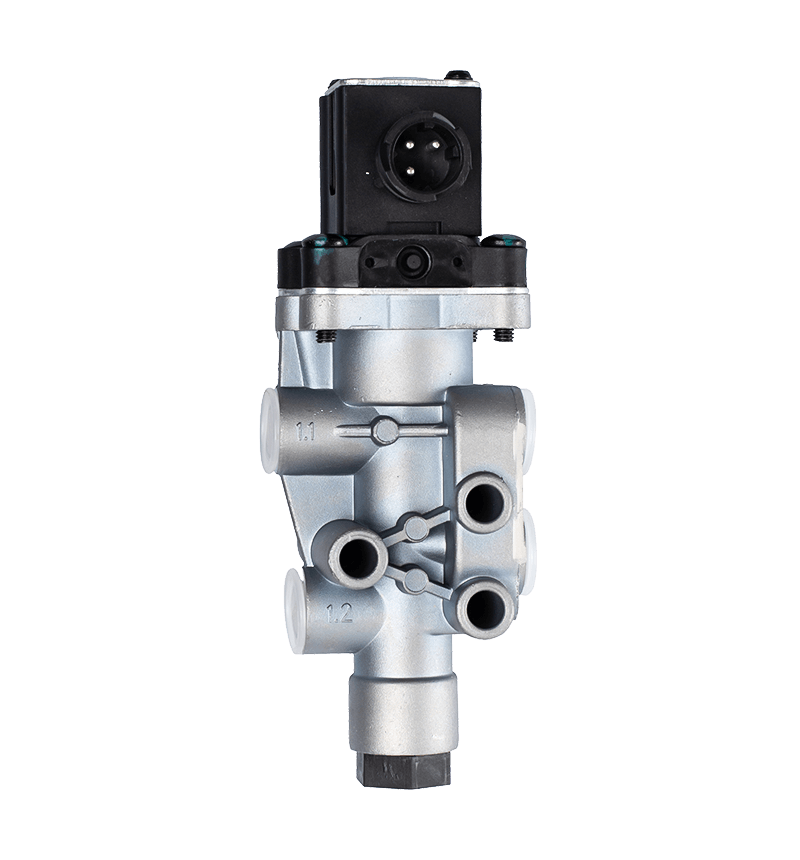Overview of ECAS solenoid valve
The ECAS solenoid valve is an important component of the electronically controlled air suspension system (ECAS), and is mainly used to adjust the gas charging and discharging and air pressure balance in the air suspension system. The valve is opened or closed by electrical signals to adjust the air flow and adjust the vehicle suspension height and stiffness. The ECAS solenoid valve cooperates with the control unit, sensor and air compressor to dynamically adjust the suspension state according to different working conditions to adapt to road conditions and load changes.
Basic principles of traditional mechanical valves
Traditional mechanical valves mainly rely on mechanical structure and physical action to control gas flow in air suspension systems. This type of valve is generally composed of a valve body, spring, seal and mechanical connection mechanism. Its opening or closing mainly depends on the action of external mechanical forces, such as vehicle load changes or direct operation by the driver. The action response of the mechanical valve depends on air pressure or mechanical displacement, the flow adjustment is relatively fixed, the flexibility is low, and the adjustment speed is also limited by the structural characteristics.
Different control methods
The biggest difference between the ECAS solenoid valve and the traditional mechanical valve is the control method. The ECAS solenoid valve is activated by an electrical signal sent by the electronic control unit (ECU). When the vehicle height sensor or other input device detects changes in height, load or vehicle posture, the control unit immediately issues a command to the solenoid valve to control the solenoid valve coil to generate electromagnetic force and drive the valve core to complete the opening and closing operation. Traditional mechanical valves lack electronic control and rely entirely on physical force or air pressure drive, which cannot achieve refined and fast response control.
Different response speed
Due to the use of electrical signal drive and electronic control strategy, the ECAS solenoid valve has a relatively faster response speed and can achieve real-time adjustment. It can quickly adjust the air pressure of the suspension system according to different road conditions and vehicle load changes in a short time. The adjustment of traditional mechanical valves is often limited by structural inertia, friction and mechanical reaction time, and the adjustment process is relatively slow, which is not easy to meet the needs of modern vehicles for dynamic suspension adjustment.
Different control accuracy
The ECAS solenoid valve can achieve more precise adjustment of air flow and air pressure through the synergy with sensors and electronic control units. It can control the inlet and outlet of gas according to a predetermined program, achieve staged or continuous adjustment, and meet the suspension requirements under different working conditions. In contrast, the regulation accuracy of traditional mechanical valves is low, and gas flow regulation is mostly achieved in a simple switch or flow limiting manner, which cannot achieve graded or continuous control.
Different functional expansion capabilities
ECAS solenoid valves support more functional expansion, such as automatic level adjustment, automatic lifting of the vehicle body, electronic height limit, automatic lowering of the vehicle body after parking, etc. These functions are completed through the cooperation of solenoid valves and electronic control systems to achieve high automation. Traditional mechanical valves rely on mechanical movements and do not have the ability to integrate with electronic control systems. Therefore, their functions are relatively simple and cannot support complex automatic adjustment or intelligent management.
Different maintenance methods
The maintenance of ECAS solenoid valves focuses on electrical connections, electronic units and internal cleaning of the valve body. It is necessary to regularly check the power supply voltage, signal line integrity and waterproof sealing status to prevent failure of the electronic part. Traditional mechanical valves mainly focus on the wear of mechanical parts, aging of seals and smoothness of gas paths, and maintenance is relatively more focused on the integrity and lubrication of physical structures.
Different application scenarios
ECAS solenoid valves are mostly used in modern commercial vehicles, buses and some passenger cars that have high requirements for vehicle height and posture. They are especially suitable for scenarios that require automatic adjustment of multiple working conditions, such as high-speed driving, off-road, load transportation, etc. Traditional mechanical valves are more commonly used in old models or engineering machinery that do not require high adjustment accuracy and response, and are suitable for occasions with relatively simple conditions.
Different requirements for system integration
ECAS solenoid valves need to be integrated with the vehicle's electronic control system, relying on the coordinated work of ECU, sensors and communication networks, and placing higher requirements on electrical systems and software and hardware integration. Traditional mechanical valves are basically independent units, with less dependence on other systems, relatively simple structure and installation, but limited functions and adjustment capabilities.


 English
English Español
Español


